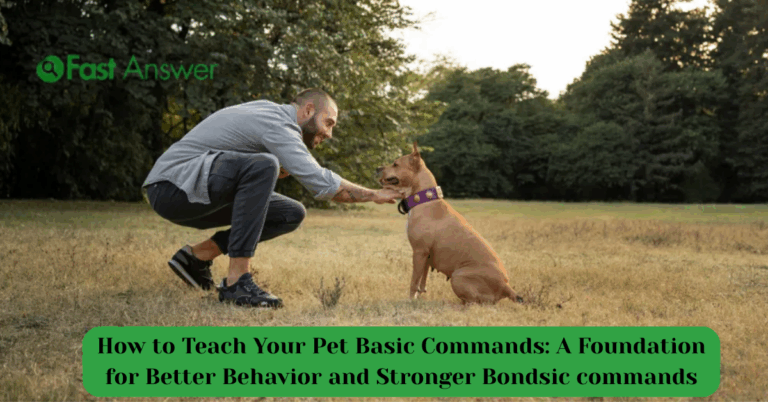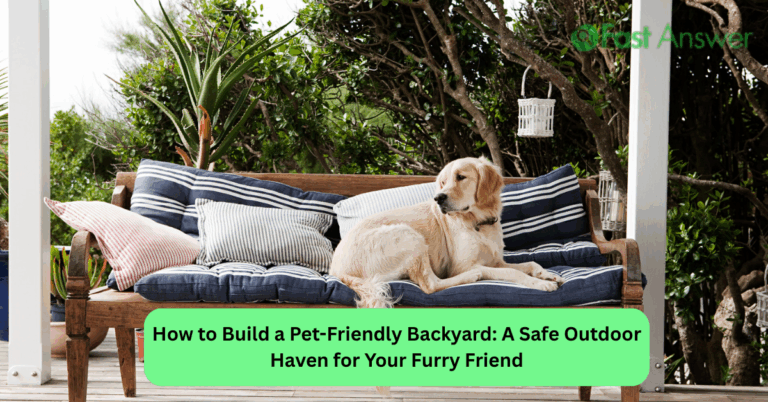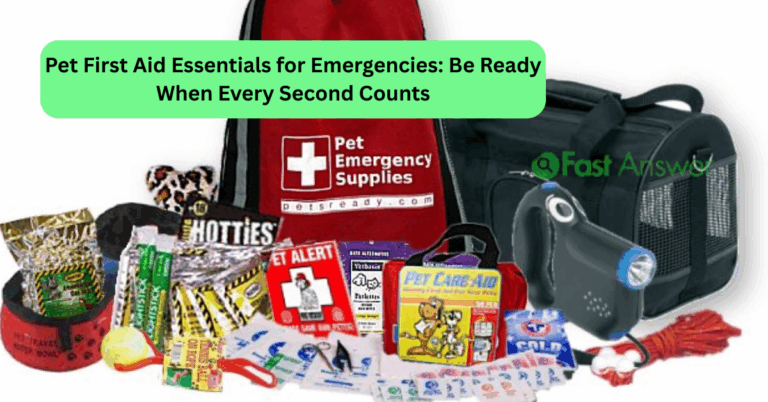How to Create a Safe Space for Your Pet: Build Comfort, Calm, and Confidence at Home
Every pet needs a place where they feel protected, comfortable, and free to be themselves. Whether your furry companion is a high-energy dog, a shy cat, or a rescue adjusting to new surroundings, creating a safe space at home is essential for their emotional and physical well being. It helps reduce anxiety, encourages healthy behavior, and provides a refuge during stressful moments like thunderstorms, vet visits, or busy gatherings. This guide shows you how to create a safe space for your pet, offering practical tips and ideas that cater to their unique needs, personality, and lifestyle.
What Does a Safe Space Look Like for Dogs, Cats, and Other Pets?
A safe space isn’t just a corner it’s an environment intentionally designed to make your pet feel secure. For dogs, it might be a cozy crate with soft bedding and toys. For cats, a quiet perch away from foot traffic or a hideaway nook near a sunny window might do the trick. Small pets like rabbits or guinea pigs also need calm areas shielded from loud noises or drafts. Regardless of the species, a safe zone should be calm, quiet, and away from daily chaos. It’s a place your pet can retreat to on their own terms, knowing they won’t be disturbed.
How to Choose the Right Spot in Your Home for Maximum Comfort
Location matters more than you might think. Choose a spot that’s consistently calm, away from loud appliances, frequent foot traffic, or other pets that might cause tension. Ideally, this area should be temperature controlled, softly lit, and free from clutter. If your pet is social but still needs downtime, opt for a room with an open doorway or baby gate so they can stay close without feeling overwhelmed. A quiet bedroom, a shaded corner of the living room, or a tucked-away hallway can work well depending on your space.
Essentials to Include That Make a Space Feel Safe and Soothing
Comfort is key. Provide a soft bed or padded mat that supports your pet’s joints and feels inviting. Add familiar scents, like an unwashed shirt or a favorite blanket, to make the space feel more personal. Include a few safe toys for mental stimulation and calming chews or treats if they’re used for anxiety. For cats, scratching posts and vertical spaces offer comfort and control. Some pets benefit from white noise machines or diffusers with calming pheromones. Keep the area free from cords, toxic plants, or objects that could be chewed or swallowed.
When Should You Guide Your Pet to Their Safe Space?
Safe spaces are especially helpful during stressful moments thunderstorms, fireworks, vet visits, or when guests arrive. If your pet begins pacing, hiding, barking, or showing signs of nervousness, gently guide them to their space using treats or calm encouragement. Never force them in. The goal is to build a positive association, so they view the space as a safe retreat rather than punishment. Over time, most pets will start seeking out their sanctuary on their own when they feel overwhelmed or simply want to rest.
How to Maintain the Safe Zone as a Long-Term Comfort Space
Consistency builds trust. Keep the safe space available at all times, even when things seem calm. Avoid using the space for time-outs or discipline. Clean bedding regularly, refresh toys, and observe how your pet interacts with the area adjust as needed based on their preferences. Over time, the space may evolve as your pet ages or their behavior changes. The most important thing is that it remains a peaceful place your pet can rely on. Even confident, outgoing animals benefit from having a dedicated spot to decompress and relax.
FAQs
Can I create more than one safe space for my pet?
Yes, multiple resting areas throughout the house can give your pet options and help reduce stress in busy households.
What if my pet doesn’t use the space I’ve set up?
Try relocating it or adjusting the items inside. Observe where your pet naturally gravitates and mimic that environment.
Should I keep my pet’s crate in their safe space?
Absolutely. Crates offer a den-like feel and can help many pets feel more secure, especially if introduced positively.
Are safe spaces helpful for rescue or adopted pets?
Yes, especially during their transition. A quiet, designated zone helps them adjust to new surroundings at their own pace.
How can I keep the area calming during loud events like fireworks?
Use blackout curtains, white noise machines, and pheromone diffusers. Let your pet retreat to their safe space with comforting items.




